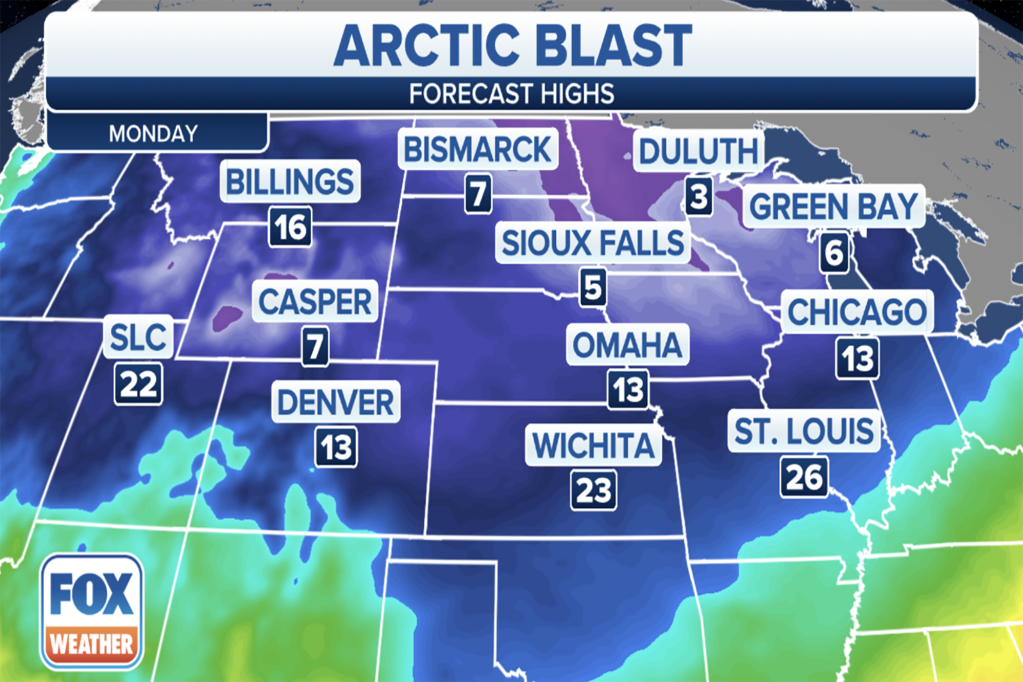Dangerous arctic blast ushering coldest air of 2023 across northern US
An arctic blast impacting the northern tier of the country is producing dangerously cold weather as some of the coldest temperatures since December plunges southward.
Highs were 25 to 40 degrees below average Sunday for much of the central and northern Plains and Midwest, with highs more than 30 degrees below average from Montana to western Kansas, according to the FOX Forecast Center. This will correspond to temperatures staying in the teens and single digits.
At night, lows will drop below zero for more than 20 million people across parts of 15 states from Idaho to Michigan.
The coldest morning will be Monday as actual temperatures drop into the negative teens and 20s in Minnesota, the Dakotas, Wyoming and Montana.
Temperatures in dangerously cold territory
Wind will make the cold feel even more bitter, with dangerous wind chills in the negative 30s and negative 40s. Frostbite will be possible in as little as 15 minutes.
About 2 million were under Wind Chill Warnings as of Sunday morning from eastern North Dakota and northwestern Minnesota, and swaths of eastern Idaho and western Wyoming.
Wind Chill Advisories cover over 14 million in 12 states across the Northern Rockies and Northern Plains into the Midwest.

Below-zero air temperatures and negative 10 to negative 20 wind chills will make it as far south as Kansas and as far east as Illinois on Monday and Tuesday morning.
Exposure to subzero wind chills can lead to frostbite that starts within minutes, and in the heart of the weekend’s arctic blast zone, the timing for the onslaught of symptoms may even be less than 60 seconds.
Southeast spared from dangerous cold
Unlike December’s record cold blast that made it all the way to Florida, the latest intrusion of cold air will be limited by how far it sinks to the south.
As the weekend progresses and the final workdays of January begin, cold air is expected to sink into northwestern Texas and the Ohio Valley, but the most dangerous conditions will remain across the northern tier of the country due to a ridge of high pressure over the Southeast.
Read the full article Here


